|
This page is to educate people on the long-coated gene in Labradors
In February 2010, I whelped a litter of lovely puppies here at Gateway - dam was my Gateway’s Curtain Call - litter pedigree is here. 3 girls and 3 boys were born and they were beautiful puppies. Their mom Callie had been DNA tested and was found to be a carrier of the long-coat gene when I had sent in a DNA test for coat color to Ingen (confirmed through testing with DDC). Her sister Lucy also was found to be a carrier. Their mother Piper was tested clear of the gene by DDC. The long-coat gene is a simple recessive trait, so 2 copies of the genes are required to express the long-coat - one from each parent. Carrier puppies have inherited one copy of the gene, but have normal coats.
Information from the DDC website regarding the inheritance of the long-coat gene:
There are 3 possible genotypes for coat length:
1) N/N Clear (those having 2 copies of the normal short-hair allele [N] and appear to be short-haired)
2) N/F Carrier (those having 1 copy of the normal short-hair allele [N] and 1 copy of the long-hair mutation [F] and appear to be short-haired)
3) F/F Affected (those having 2 copies of the long-hair mutation [F] and appear to be long-haired)
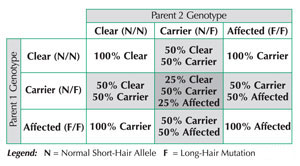
Fast forward to the age of 3 weeks or so with the litter. I noticed that 4 out of the 6 puppies were getting much curlier than I was used to seeing.
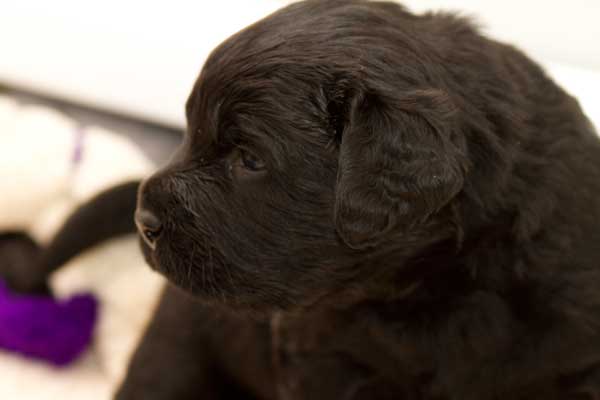
Red-collared boy at 3 weeks
By 4 weeks it was obvious these 4 puppies were much different than their 2 brothers and any other puppies I’ve raised here. I sent DNA tests in to DDC and sure enough the 4 “curly” puppies tested with 2 copies of the long-coated gene, and both normal-coated puppies as carriers (1 copy) of the long-coated gene. Obviously I hit the long-coated “jackpot” with this litter as only 25% of the puppies should have been affected, 25% clear, and 50% carriers, but that’s how the genetic throw of the dice goes.
The long-coat trait is a disqualification for the Labrador Retriever and should NEVER be intentionally bred. These puppies were produced prior to having enough information about the parents’ genotype, thus accidentally producing these adorable but totally disallowed coat trait to appear.
This is a simple gene to breed around as the test is easily performed and inexpensive, but it’s an interesting genetic trait to see.
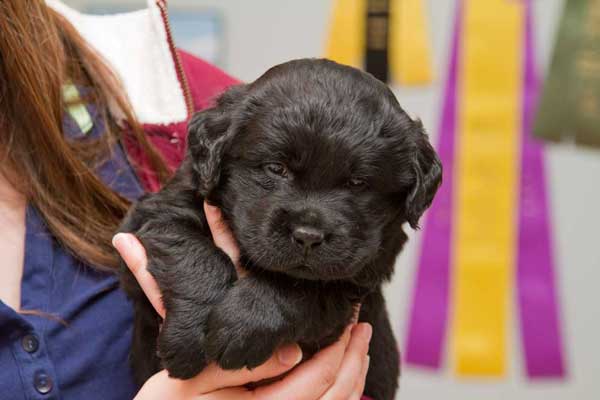 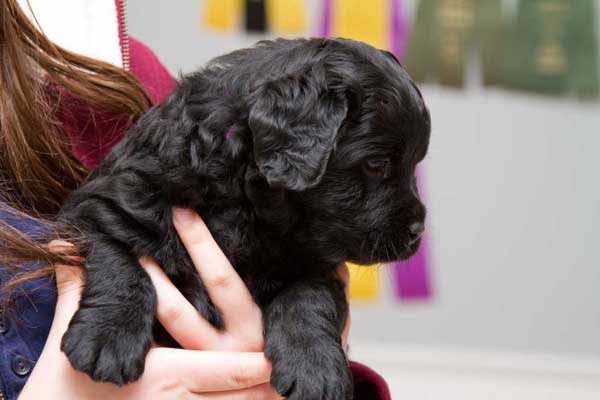
Pink-collared girl at 5 weeks Purple-collared girl at 5 weeks
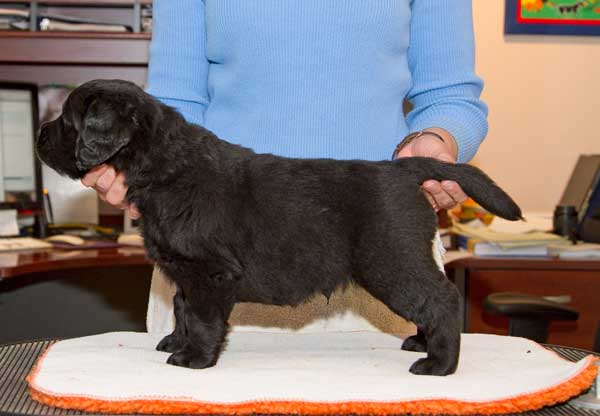 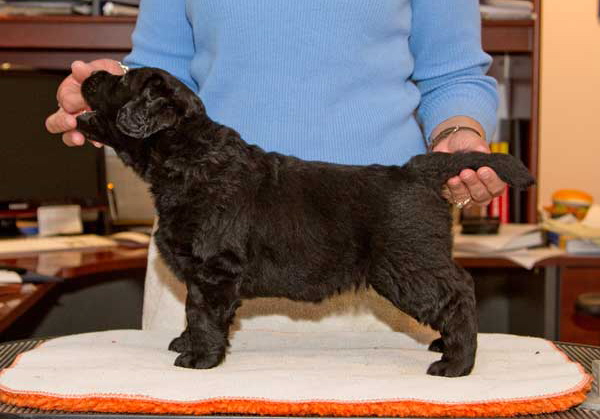
Red-collared boy at 5 1/2 weeks Yellow-collared girl at 5 1/2 weeks
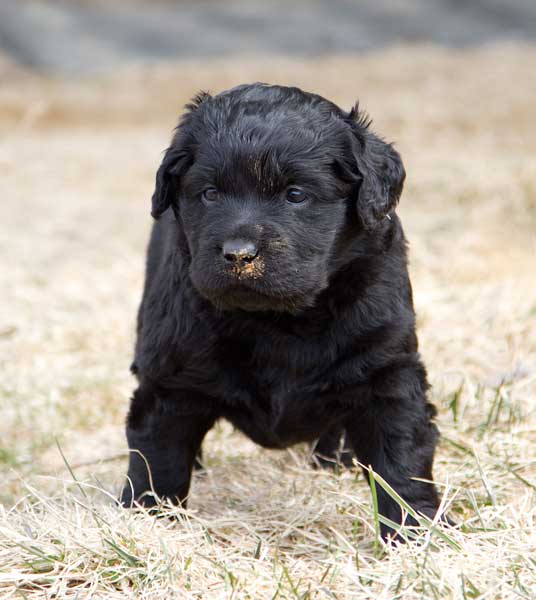
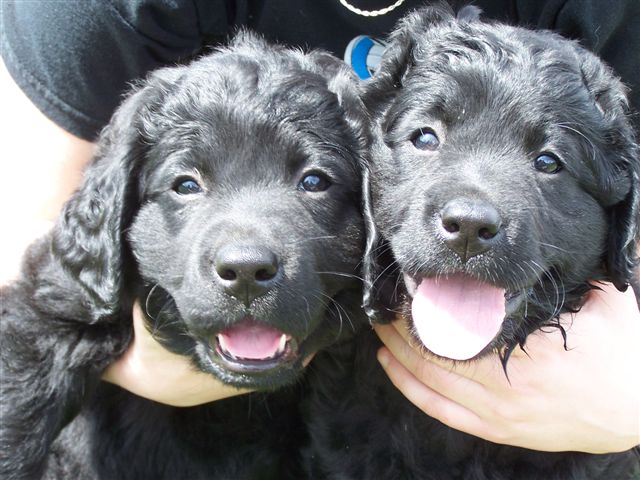
Willow (on left - Purple-collared girl) and Wally (Red-collared boy) - the 2 puppies that went to Support Dogs
and will learn how to be service dogs! Picture taken at 8 weeks.
Here’s Wally (Red-collared boy) at 16 months - in training at Support Dogs!
 
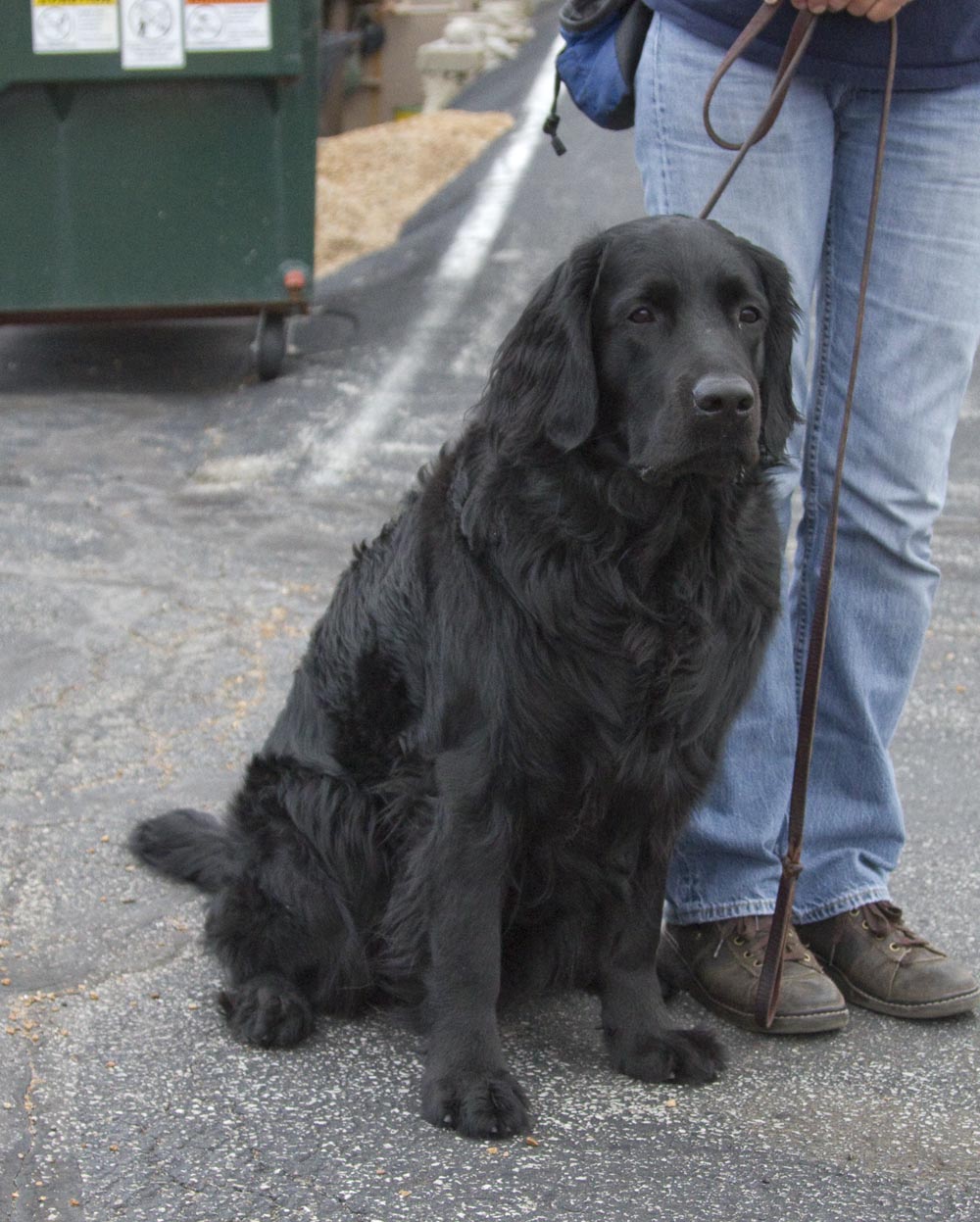
I will continue to add pictures to this page as the puppies grow and also as I get any more information regarding the origins of the gene. I believe breeders can benefit in seeing what long-coated puppies look like at various ages.
|